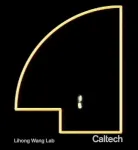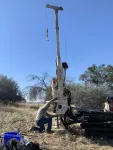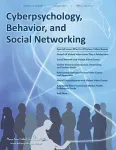(Press-News.org) There are things in life that can be predicted reasonably well. The tides rise and fall. The moon waxes and wanes. A billiard ball bounces around a table according to orderly geometry.
And then there are things that defy easy prediction: The hurricane that changes direction without warning. The splashing of water in a fountain. The graceful disorder of branches growing from a tree.
These phenomena and others like them can be described as chaotic systems, and are notable for exhibiting behavior that is predictable at first, but grows increasingly random with time.
Because of the large role that chaotic systems play in the world around us, scientists and mathematicians have long sought to better understand them. Now, Caltech's Lihong Wang, the Bren Professor in the Andrew and Peggy Cherng department of Medical Engineering, has developed a new tool that might help in this quest.
In the latest issue of Science Advances, Wang describes how he has used an ultrafast camera of his own design that recorded video at one billion frames per second to observe the movement of laser light in a chamber specially designed to induce chaotic reflections.
"Some cavities are non-chaotic, so the path the light takes is predictable," Wang says. But in the current work, he and his colleagues have used that ultrafast camera as a tool to study a chaotic cavity, "in which the light takes a different path every time we repeat the experiment."
The camera makes use of a technology called compressed ultrafast photography (CUP), which Wang has demonstrated in other research to be capable of speeds as fast as 70 trillion frames per second. The speed at which a CUP camera takes video makes it capable of seeing light--the fastest thing in the universe--as it travels.
But CUP cameras have another feature that make them uniquely suited for studying chaotic systems. Unlike a traditional camera that shoots one frame of video at a time, a CUP camera essentially shoots all of its frames at once. This allows the camera to capture the entirety of a laser beam's chaotic path through the chamber all in one go.
That matters because in a chaotic system, the behavior is different every time. If the camera only captured part of the action, the behavior that was not recorded could never be studied, because it would never occur in exactly the same way again. It would be like trying to photograph a bird, but with a camera that can only capture one body part at a time; furthermore, every time the bird landed near you, it would be a different species. Although you could try to assemble all your photos into one composite bird image, that cobbled-together bird would have the beak of a crow, the neck of a stork, the wings of a duck, the tail of a hawk, and the legs of a chicken. Not exactly useful.
Wang says that the ability of his CUP camera to capture the chaotic movement of light may breathe new life into the study of optical chaos, which has applications in physics, communications, and cryptography.
"It was a really hot field some time ago, but it's died down, maybe because we didn't have the tools we needed," he says. "The experimentalists lost interest because they couldn't do the experiments, and the theoreticians lost interest because they couldn't validate their theories experimentally. This was a fun demonstration to show people in that field that they finally have an experimental tool."
INFORMATION:
The paper describing the research, titled "Real-time observation and control of optical chaos," appears in the January 13 issue of Science Advances. Co-authors are Linran Fan, formerly of Caltech, now an assistant professor at Wyant College of Optical Sciences at the University of Arizona; and Xiaodong Yan and Han Wang, of the University of Southern California.
Funding for the research was provided by the Army Research Office Young Investigator Program, the Air Force Office of Scientific Research, the National Science Foundation, and the National Institutes of Health.
CORVALLIS, Ore. -- A recent study from Oregon State University found that after Oregon expanded Medicaid in 2014, more women were able to receive insurance coverage for abortion services, rather than paying out of pocket.
In analyzing Medicaid claims data and other medical records, researchers found that the Medicaid-financed share of total abortions increased each of the first three years following the state's Medicaid expansion. The incidence of Medicaid-financed abortions increased 18% in 2014, then 7% each in 2015 and 2016.
The total number of abortions in the state did not rise; rather, the expansion shifted who paid for them.
"According to the literature, there was a 1% decline in the abortion rate in Oregon between 2014 and 2017. During the pre-expansion ...
As marijuana outlets open after the drug is legalized, the density of those recreational retailers is associated with more use and a greater intensity of use among young adults, according to a new RAND Corporation study.
The study is among the first to examine associations between the density of marijuana outlets and marijuana use over time, and is the first to include unlicensed dispensaries in such an analysis.
Studying young adults in Los Angeles County the year before and the year after marijuana was available for recreational purchase in ...
TROY, N.Y. -- Blood sample analysis showed that, two to five years after they gave birth, mothers of children with autism spectrum disorder (ASD) had several significantly different metabolite levels compared to mothers of typically developing children. That's according to new research recently published in BMC Pediatrics by a multidisciplinary team from Rensselaer Polytechnic Institute, Arizona State University, and the Mayo Clinic.
Researchers analyzed blood samples from 30 mothers whose young children had been diagnosed with ASD and 29 mothers of typically developing children. At the time that the samples were taken, the women's children were between 2 and 5 years old. The team found differences in several metabolite levels between the two groups of mothers. ...
Research led by the University of Wyoming shows that physical weathering is far more important than previously recognized in the breakdown of rock in mountain landscapes. Because it is difficult to measure, physical weathering has commonly been assumed to be negligible in previous studies.
Cliff Riebe, a professor in UW's Department of Geology and Geophysics, headed a research group that discovered that climate and erosion rates strongly regulate the relative importance of subsurface physical and chemical weathering of saprolite, the zone of weathered rock that retains the relative positions of mineral grains of the parent bedrock and lies between ...
A compound developed at Oregon Health & Science University appears to protect nerve fibers and the fatty sheath, called myelin, that covers nerve cells in the brain and spinal cord.
The discovery, published in the Journal of Neuroimmunology, could be important in treating or preventing the progression of multiple sclerosis and other central nervous system disorders. The new research in a mouse model advances earlier work to develop the compound - known as sobetirome - that has already showed promise in stimulating the repair of myelin.
"Sobetirome and related drugs are effective at stimulating myelin repair after damage has occurred. Our new findings now suggest that these drugs could also prove ...
Earth gets blasted by mild short gamma-ray bursts (GRBs) most days. But sometimes a giant flare like GRB 200415A arrives at our galaxy, sweeping along energy that dwarfs our sun. In fact, the most powerful explosions in the universe are gamma-ray bursts.
Now scientists have shown that GRB 200415A came from another possible source for short GRBs. It erupted from a very rare, powerful neutron star called a magnetar.
Previous detected GRB's came from relatively far away from our home galaxy the Milky Way. But this one was from much closer to home, in cosmic terms.
GRB explosions can disrupt mobile phone reception on earth, but they can also be messengers from ...
(Boston)--What percent of patients with Alzheimer's Disease (AD) currently have severe dementia? Do more people have mild disease? Or are the majority suffering with moderate dementia? A new study using data from the Framingham Heart Study (FHS) sheds light on these trends.
Boston University School of Medicine researchers have found that slightly more than half (50.4 percent) of cases are mild, just under one-third (30.3 percent) of cases are moderate and 19.3 percent are severe cases. Among all participants with mild cognitive impairment (MCI) and AD, the pooled percentage was 45.2 percent for the combined group of mild AD dementia and MCI that later ...
In 2007, an increase in world food prices led to a global rush for land in the form of land grabs or large-scale land acquisitions. Over the last two decades, such acquisitions have resulted in millions of hectares of land changing hands in developing nations. Although such changeover can increase the cultivation of crops needed to feed the world's growing population and spark new agricultural practices and technologies, it can also lead to environmental degradation, increased carbon emissions and threats to the livelihoods of smallholder farmers.
The socioeconomic ...
Financial responsibility means managing money in a relatively sensible way by minimizing superfluous or unnecessary spending. But according to new research from the University of Notre Dame, people think they are more financially responsible than they actually are.
Even when people consistently spend their money superfluously, they still believe that they manage their money in a responsible fashion, according to " END ...
New Rochelle, NY, January 13, 2021--Aggressive video games are not a risk factor for mental health problems, according to a new study of more than 3,000 youth. This study is part of a special issue on the effects of violent video games published in the peer-reviewed journal Cyberpsychology, Behavior, and Social Networking. Click here to read the issue now.
Christopher Ferguson, PhD, Stetson University, and C.K. John Wang, PhD, Nanyang Technological University, examined whether early exposure to aggressive games was predictive of anxiety depression, somatic symptoms, or ...


